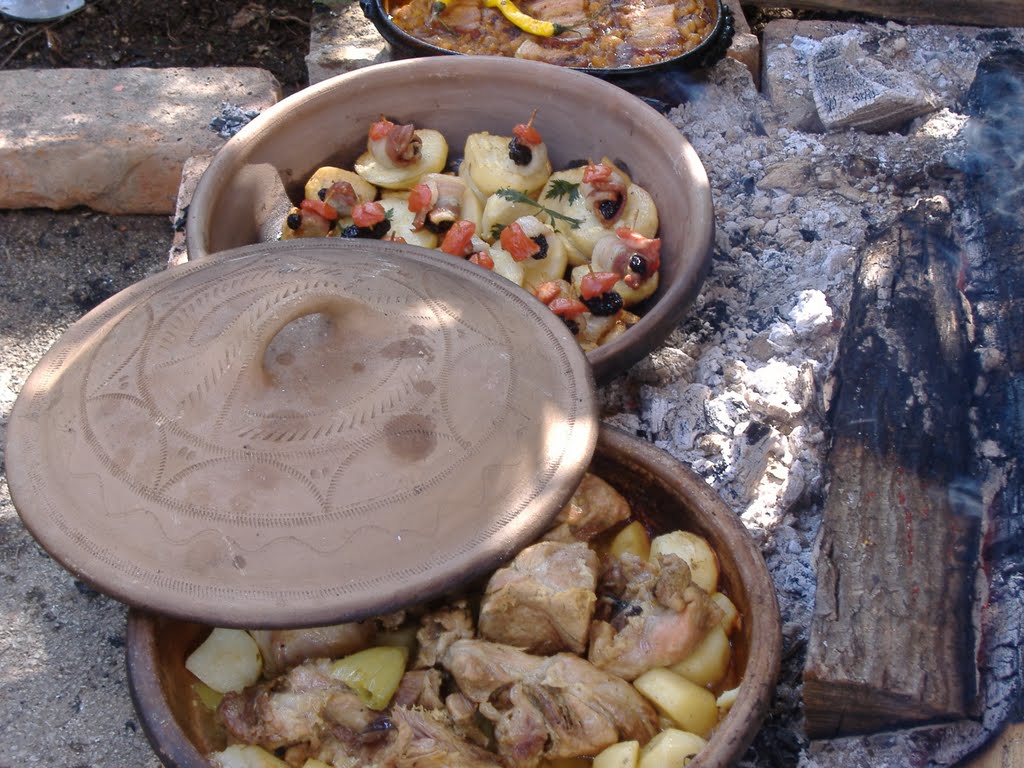Jerusalem and a small village in North Dalmatia called Vrlica, have something in common. Namely, the ancient tradition of guarding Christ’s tomb was noted only in these two places in the whole world, and after the exile of Serbs from these areas, the ancient custom has continued in Batajnica.
It is believed that this unique ritual that Serbs from Vrlička Krajina carried over to the temple of the Holy Virgin in Batajnica, is more than 500 years old. No one knows for certain how the custom became the habit of those lands but the centuries that passed by did not prevent new generations to preserve one of the most unusual and interesting customs related to Easter.
The Guardians of the Grave of Christ only once broke the tradition that no historical crisis, cataclysms and not even the Second World War could prevent. But, it happened in 1995, when they were forcefully driven out from their motherland. On the tenth anniversary of the military actions of the Croatian authorities called “The Storm” in which Serbs were expelled from their homes, the custom was revived.
With firm faith and vows that were laid before the ancestors, guardians meet every year on Good Friday and elect a chieftain, the best among them, as a leader of the Guard. From that moment on, dressed in national costume of the area of their origin, the guardians come to church and take their places on the north and the south side of the tomb of Christ. Discreetly and in solid devotion, guards take turns and watch over the Holy Shroud.
The custom that enriches liturgy with elements of warrior dignity lasts until Easter. The guardians take turns in the following manner: when the chieftain introduces two new and rested guardians in the nave he strikes with a rifle on the church floor and only after that new guards take the place of the previous ones. On Holy Saturday the guards go to confession, have communion, and then, as tradition dictates, cod is served.
The custom continues with the midnight liturgy that takes place in the Temple of Saint Sava. When Easter day dawns and the morning liturgy ends, the Ojkače songs, gluvo kolo and the celebration of the Resurrection begin. Then you can hear the sounds of diple, gusle or dvojnice, and it is customary that the people gathered start to sing along with those who were honorably guarding the tomb of Christ.
The exact origin of the tradition of guarding the tomb of Christ is not known. It is assumed that it was brought to Dalmatia by a priest who was on a pilgrimage to Jerusalem, but there is also a belief that the guard was introduced to the church during the Easter service in order to keep people safe from Turkish attacks.
It is interesting that only the men originating from villages Cetina, Vrlika, Otišić or some other neighboring Serbian villages can become the guardians of Christ’s tomb. The striking symbolism is evident in the national costume, which is an essential part of the whole ritual. It consists of a flat cap with predominant metal parts representing armor and symbolizing courage and strength, gaće (trousers), krožet (vest), čerma (combat jacket with silver buttons), pašnjača (combat leather belt), pas (decorative woolen belt) and trlagan (woolen jacket). The guardians have opanke (leather sandals) on their feet, socks, cloth protectors and potkoljenjače (leather straps below the knees).
By the decision of the National Committee for The Intangible Cultural Heritage from June 18th 2012 “Guarding the Grave of Christ” is registered on the List of Intangible Cultural Heritage of the Republic of Serbia at the proposal of the “Guardians of the Grave of Christ'” from Batajnica.
Wake beside the tomb of Christ in Frankfurt
The importance and significance of the ancient custom is best illustrated by its practice in diaspora. Since 2013, the temple dedicated to the Resurrection of the Lord in Frankfurt, cherish this custom on Good Friday by performing the evening prayer, bringing out the Holy Epitaphios and adorning the tomb of Christ.
“Wake of the guards over the tomb of Christ, is almost forgotten custom of our people and has been preserved only among the Serbs in Dalmatia, and as of this year it will be regularly performed in the temple of Gallus in Frankfurt,” says clergyman Simon Turkić.
A large number of believers show up at every performance of the custom that combines archaic rituals and ancient Christian tradition of guarding Christ’s tomb. Walking around the temple, following the Holy Epitaphios (Plaštanica), and adorning the tomb of Christ is a way that believers contribute to and participate in a tradition that their ancestors transferred “from generation to generation.” Thus, even though they are away from their native country, the Serbs keep their identity and heritage of their people.


























